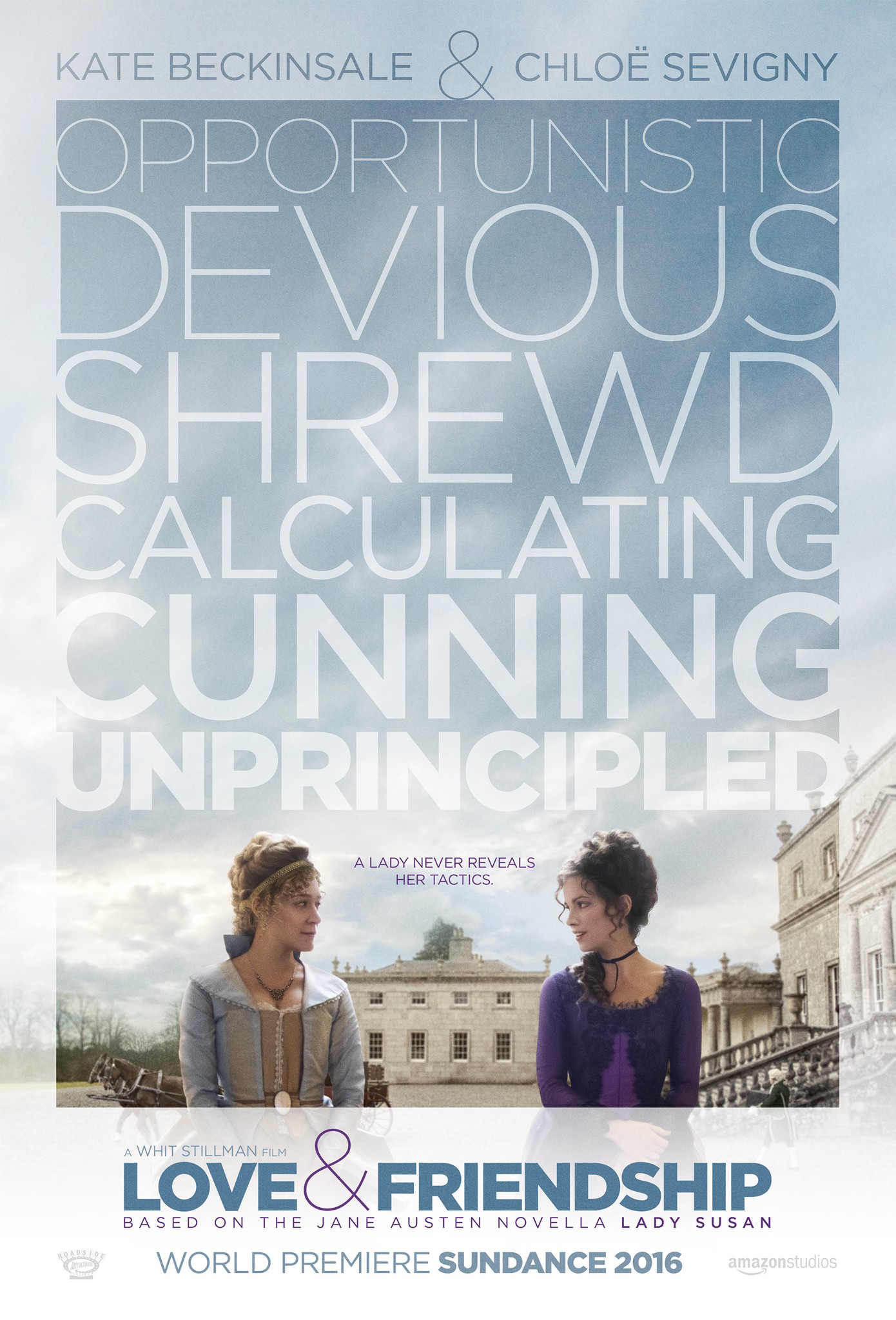Love & Friendship
Posted on May 12, 2016 at 5:54 pm
B+| Lowest Recommended Age: | Middle School |
| MPAA Rating: | Rate PG for some thematic elements |
| Profanity: | None |
| Alcohol/ Drugs: | Alcohol |
| Violence/ Scariness: | Scuffles |
| Diversity Issues: | Class issues |
| Date Released to Theaters: | May 13, 2016 |
| Date Released to DVD: | September 6, 2016 |
| Amazon.com ASIN: | B01HE7NTX6 |

That assessment is not exactly accurate. Making a whole family miserable is somewhere between collateral damage and side benefit.
Lady Susan (fearless but effervescent Kate Beckinsale) is a recent widow with a teenaged daughter. In the manner of the era, when the gentry visited each other for months at a time, she has been staying with friends. First, she has no money and therefore her primary asset, aside from her guile and is her relationships with more comfortably settled members of her class. And second, the best chance for her to have a home of her own again is to marry her daughter off to a wealthy man. Stillman makes Lady Susan a more sympathetic character than Austen did, in part due to the vivacity of the actress who portrays her. It’s hard to have her believably portray such a captivating figure without our being captivated ourselves. But in addition, it is clear throughout that she may be ruthless and mercenary, but she has no other options. Her very status and gender constrain her from any other option, but she is undeterred. “In one’s plight is one’s opportunity,” she says. She has a gift for outrageous comments made with so much confidence they almost sound reasonable: About being sent away by her hostess: “If she were going to be jealous, she should not have married such a charming man.” About her daughter’s school: ““The fees are too high to even think of paying!” In the midst of an era of polite misdirection and euphemism, she is focused and direct, a hint of the coming modernity in the days of the harpsichord.
If she was around today, she’d be a CEO. Or a reality star.
Lady Susan has very little by way of education. She is not sure how many Commandments there are or what they contain. But she knows people, especially men. She knows her husband’s family has no socially acceptable vocabulary to tell her she can no longer stay with them. And when a handsome, eligible man warned about her skill with the opposite sex appears ready to resist her, she cleverly upends his expectations and before he knows it, he is captivated.
Stillman presents the story with wit and brio, introducing us to the characters with helpful on-screen descriptors: “his wealthy wife,” “a divinely attractive man.” The slight archness is his, or Austen’s, or Lady Susan’s; all are a bit reductionist when it comes to assessing everyone in the story according to his or her usefulness. He resists the usual musty respect for all classics, especially those featuring corsets, and presents the story with elegance and a refreshing briskness. Lady Susan would approve.
Parents should know that this film includes themes of deception and adultery.
Family discussion: Why did Lady Susan confide in Alicia? How did Lady Susan show her understanding of what it took to gain the affection of the different men around her?
If you like this, try: more Jane Austen films including “Sense and Sensibility” and “Pride and Prejudice,” as well as the books that inspired them


